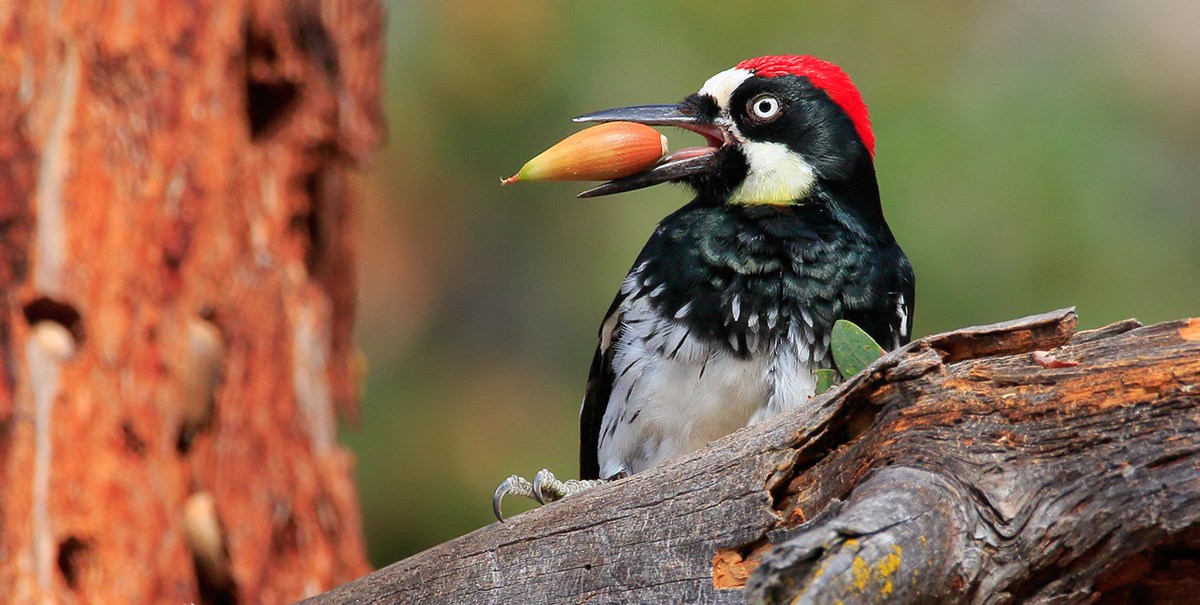Woodpeckers in Florida: Nature, Ecology, and Conservation
Woodpeckers in Florida: Nature, Ecology, and Conservation
Blog Article
Woodpeckers Unleashed: Checking Out the Marvels of These Competent Tree Mountain Climbers
Woodpeckers, with their unique markings and balanced drumming resembling through wooded areas, hold an one-of-a-kind location in the avian globe - Woodpeckers in Florida. As we dig into the intricate information of woodpeckers' nesting habits, feeding strategies, and the ongoing preservation efforts to protect these impressive birds, a much deeper gratitude for their location in nature unravels.
Anatomy and Adaptations
When examining the composition and adaptations of woodpeckers, one can observe impressive features that make it possible for these birds to grow in their specialized ecological niche. Woodpeckers are geared up with a suite of distinct anatomical qualities that help them in their woodpecking behavior. One of one of the most prominent functions is their solid, chisel-like beak, which is specialized for drilling right into wood to uncover insects or produce nesting tooth cavities. This beak is sustained by solid neck muscle mass and an extremely created skull framework that acts as a shock absorber, enabling woodpeckers to consistently peck at trees without creating mind injury. Additionally, woodpeckers have zygodactyl feet, with 2 toes dealing with forward and 2 facing in reverse, providing a company hold on tree trunks while they look for food or drum for interaction.
In addition, woodpeckers have a distinct tongue framework that is long, barbed, and sticky, enabling them to draw out pests from gaps in wood. This customized adjustment enables woodpeckers to exploit a food source that is inaccessible to numerous other bird varieties. On the whole, the composition and adjustments of woodpeckers showcase the remarkable transformative remedies that have actually enabled these birds to flourish in their arboreal environment.
Drumming Behavior
Having explored the anatomy and adaptations of woodpeckers, the emphasis now changes to comprehending their drumming habits, an unique facet of their interaction and territorial screens. Drumming is an important form of communication amongst woodpeckers, serving several objectives such as establishing regions, drawing in friends, and signaling alarm. Each woodpecker varieties has a special drumming pattern that helps individuals identify participants of their own types and distinguish them from competitors or predators.
Woodpeckers produce drumming noises by swiftly pecking on powerful surface areas such as dead trees, energy poles, and even metal things, creating a collection of rhythmic beats. The strength and rate of drumming can differ based upon the purpose; as an example, a quick drumming series might indicate hostility towards trespassers, while a slower and softer drumming pattern might show courtship (Woodpeckers in Florida). Additionally, woodpeckers might adjust the regularity and period of their drumming to convey particular messages properly
Nesting Practices
Discovering the nesting practices of woodpeckers reveals interesting insights into their reproductive behaviors and environment options. Woodpeckers are understood for their one-of-a-kind nesting choices, frequently digging Resources deep into pop over to this site dental caries in trees to produce protected areas for elevating their young. These tooth cavities offer not only as a nesting site however additionally as a secure haven from predators and severe weather condition.
Woodpeckers display a high level of integrity to their nesting websites, frequently returning to the very same location time after time. This habits highlights the value of ideal habitat accessibility for their reproductive success. The choice of a nesting site is essential for woodpeckers, with elements such as tree varieties, elevation, and degeneration phase playing considerable duties in their decision-making process.
Surprisingly, some woodpecker varieties are understood to excavate numerous dental caries within their territory, giving themselves with different nesting choices. This technique may work as a type of insurance policy against prospective hazards or disruptions to their main nesting website.

Feeding Techniques
Woodpeckers use a range of specialized feeding strategies to obtain their key food resources. Among one of the most distinctive feeding habits of woodpeckers is drumming, which involves quick pecking on trees to reveal pests below the bark. This drumming not just assists them find victim yet also acts as a way of interaction with various other woodpeckers. Woodpeckers have strong, chisel-like beaks that allow them to drill you could check here into timber effortlessly. Once an opening is produced, they use their lengthy, barbed tongues to remove bugs such as ants, beetles, larvae, and crawlers. These tongues are covered with sticky saliva that helps trap the victim. Woodpeckers are also known to excavate cavities in trees to accessibility concealed insect larvae or sap. Some species, like the acorn woodpecker, shop nuts in specifically produced holes called granaries. This calculated saving of food helps them endure throughout food shortage durations. Woodpeckers are really remarkable in their feeding techniques, showcasing adaptability and knowledge in obtaining their nutrition.
Conservation Efforts
In the middle of the intricate feeding methods displayed by woodpeckers, the preservation efforts focused on safeguarding these interesting birds play a vital role in preserving their environments and populaces. Woodpeckers face different dangers to their survival, including environment loss due to logging, environment adjustment modifying their environments, and accidents with synthetic frameworks such as structures and vehicles - Woodpeckers in Florida. Guardians are actively working to attend to these obstacles and make sure the long-term well-being of woodpecker varieties

Education and learning and public awareness projects are also important components of woodpecker conservation efforts. By elevating awareness concerning the value of these birds in maintaining healthy and balanced woodland ecosystems, conservationists can garner assistance for environment conservation efforts and advertise accountable land management practices. With collective initiatives between scientists, policymakers, and neighborhood areas, we can function together to protect a future where woodpeckers thrive in their all-natural environments.
Verdict

Report this page